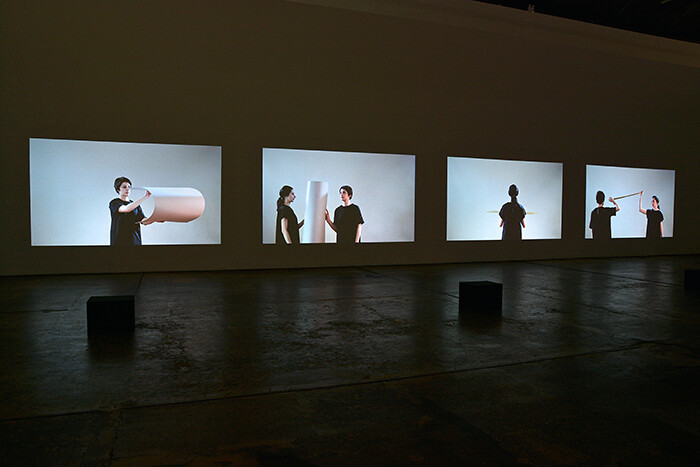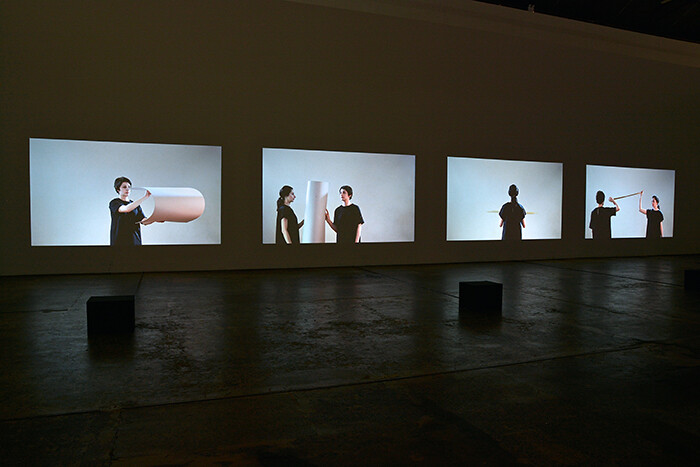“The projection of the New York art world as the metropolitan center for art by every other art world is symptomatic of the provincialism of each of them.”(1) wrote in 1974 the Australian art historian Terry Smith, in the article “The Provincialism Problem,” (2) which has been contested ever since, especially by his fellow citizens. By then Smith had relocated from Sydney to New York, and his conclusion was as clear as it was controversial: anything created outside of that city was by definition provincial. Times have changed since Smith’s article was written, and New York is now one of many centers of art. If in the mid-1970s those who didn’t move there were provincial, the opposite is almost becoming true today, as perpetual global mobility is one of the current hallmarks of contemporary artists.
Though the centers of art and its legitimizing forces have proliferated in many locations around the world, it is still common for arts councils of more peripheral nations to send artists to New York, London, and Berlin to build networks and increase the possibility that they will be picked up or discovered by curators operating outside of the artists’ local context. For 20 years, the International Studio & Curatorial Program (ISCP) in New York has been channeling this logic and playing host to thousands of artists and curators from over 60 different countries, primarily funded through national grant schemes and arts programs, as they find ways to make work in a new context. Gabriella Mangano and Silvana Mangano—collaborating twin artists currently based in Melbourne, Australia—spent a few months at the ISCP leading up to their current exhibition at Anna Schwartz Gallery in Sydney, “Of Objects or Sound.” The resulting video works, which incorporate scores and chance operations, can be read against the history of New York Minimalism and the legacy of John Cage, especially that seen in the Judson Dance Theater—the experimental initiative based out of a Greenwich Village church in the 1960s—or Fluxus. At the same time, their work sits just as comfortably within the materialist practices in art that have been prevalent in the artists’ home state of Queensland since the 1970s.
For “Of Objects or Sound,” the Mangano sisters installed two distinct bodies of work across the room from one another. Each produced during their time in New York, one consists of four large-scale projections, and the other of nine videos presented on monitors. Before even entering the gallery space, the most arresting element of the exhibition reveals itself: the sound. Repetitive, ritualistic noises echo against the walls, creating a musical atmosphere dictated by aleatory relationships between discrete works. Along one side of the industrial space, four projections are shown in a sequence, each one depicting a series of movements enacted by the artists. Positioned in front of white walls and wearing simple black smocks, they divert the attention away from the specificities of their bodies towards the objects in motion. The videos are individually named—Standing Piece for Forms, Standing Piece for Sound, Walking Piece for Forms, and Imagining structures (all 2014)—but together form an experience larger than the individual parts. Two materials are featured in the videos, an A1 sheet of stiff paper and a few bronze-colored metal rods, all of which were found in and around the ISCP studio building in East Williamsburg. Alternating between solo appearances and duets, each artist, in turn, creates dance-like, and at times, ritualistic gestures that reveal the inherent potentialities of light, shadow, line, spatial depth, and sonic resonance of each material when manipulated by the human body.
The artists’ careful yet improvised movements, centered around a simple object, bring to mind works such as choreographer and artist Simone Forti’s Slant Board (1961), in which dancers climb up a slanted platform with the support of a number of hanging knotted ropes, improvising and pausing their movements as they go. American sculptor Robert Morris, who constructed the prop for Forti, writes of the piece: “Here the rules were simple and did not constitute a game situation but rather indicated a task while the device, the inclined plane, structured the action.”(4) Likewise, the devices featured in the Manganos’ work structure their actions, determining the movement of their bodies, and the ways in which the objects appear.
Across the room is Performance Compositions for Sculpture (2014). On a series of nine monitors hung at eye-level, more materials collected from Brooklyn’s semi-industrial streets are manipulated before the camera. This time set against black backgrounds, these short videos are close-ups of objects, alternating between overt and subtle movement from one screen to the next. At times, the hands of the artists are visible, revealing the trickery of the action that recalls the illusory effects of Georges Méliès’s early cinema. In one sequence, a small, metal ball with a post sticking out spins like a top, seemingly of its own accord. In another, two hands compress a red rubber circle, moving ever so slightly as they struggle against the material’s resistance.
In the existing exhibition reviews and explanatory texts on the Manganos’ practice, references to the medium of drawing, which was an early focus in their work, appear time and again. Other critics concentrate on the performative aspects of their work, attempting to situate them within the histories and discourses of performance art. Neither of these has proven to be productive in writing about this particular exhibition. Their mobility and diversity of references—in addition to their focused material investigation—situate these artists as easily in New York as in Melbourne. In thinking about the Manganos’ work, we fail to see why provincialism is as troubling as Smith suggests. The artists’ thoroughly compelling approach exposes the easily overlooked nature of the simplest of forms—from the way paper resists being curved and creates striking shadows to the tinkling sounds of metal rods as they bounce between two hands. Like the ambivalence traced in the title of the exhibition, “Of Objects or Sound,” the bodies of works at Anna Schwartz Gallery embrace uncertainty despite their formal rigor. This productive doubt will keep us wondering where their practice will next take them.
1) Terry Smith, “The Provincialism Problem,”’ Artforum, vol. XII, no. 1 (September 1974): 54. 2) Ibid, 54–59. 3) Robert Morris, “Notes on Dance” (1965) in October Files: Robert Morris, ed. Julia Bryan-Wilson (Cambridge, Mass.: MIT Press, 2013), 1.











